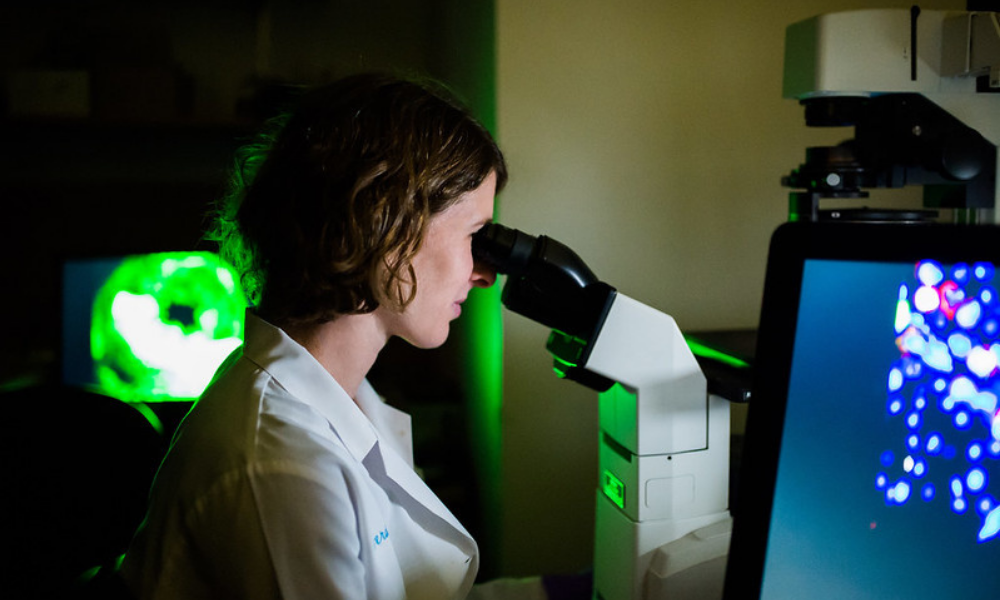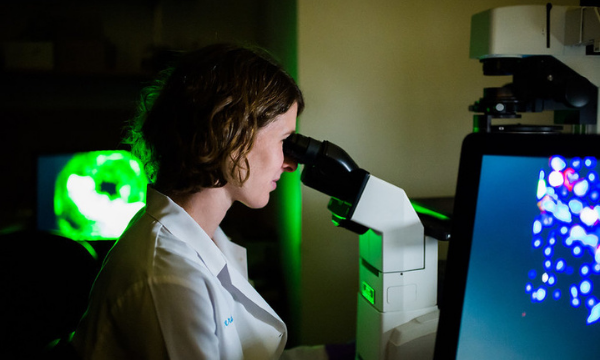Nephrology Division
Calciphylaxis Program


Contact Information
Calciphylaxis Program
165 Cambridge St. Suite 302
Boston,
MA
02114
Phone: 617-726-7872
Email: SNIGWEKAR@mgh.harvard.edu
Hours:
8:00 am to 5:00 pm
Explore This Treatment Program
Calciphylaxis is a rare and serious disorder characterized by reduction in blood flow to skin tissue due to a buildup of calcium in the walls of blood vessels. Calciphylaxis predominantly affects individuals who have advanced kidney disease. The disorder, however, is not restricted to individuals with kidney disease. Calciphylaxis typically manifests with painful skin abnormalities like skin discoloration, a nodule or an ulcer. Unfortunately, individuals with calciphylaxis are at a high risk for skin infection, hospitalization and death.
Our Services
The calciphylaxis program at Massachusetts General Hospital leverages expertise from many specialists by bringing them together to offer multidisciplinary evaluations and treatments targeted to improve outcomes. As a team, we are dedicated to excellence in patient care through early diagnosis, personalized treatment, prevention and cutting-edge research.
Our Research
At Mass General, we provide a comprehensive interdisciplinary care encompassing diagnosis, treatment and prevention of calciphylaxis. Our personalized care approach starts with establishing the diagnosis of calciphylaxis with an utmost certainty and a thorough evaluation of risk factors. We then address the following domains: pain management, wound care including careful assessment of surgical debridement, avoidance/mitigation of risk factors for calciphylaxis, dialysis prescription adjustment (for individuals with end stage kidney disease), mineral metabolism management and consideration of off-label therapies including sodium thiosulfate and bisphosphonates. We formulate our clinical treatment approach to be congruent with the patient’s goals of care. In addition, our internationally renowned team conducts cutting-edge translational and clinical research in the area of calciphylaxis and vascular calcification. We offer individuals with calciphylaxis opportunities to participate in clinical research studies including interventional trials (our research).
Active studies:
- Partners Calciphylaxis Biobank (PCB): Calciphylaxis is a rare and still very much misunderstood disease. The Partners Calciphylaxis Biobank (PCB) is designed to create a large database of surveys and blood samples to learn more about this terrible disease. If you would like to participate, we would ask you to fill out two brief surveys and collect a one time blood draw at your local doctor’s office or dialysis session. You can participate in this study from anywhere in the United States.
- CALCIPHYX: The CALCIPHYX Study is researching an investigational drug to find out if it can help improve calciphylaxis wound healing and reduce wound pain. The trial is sponsored by Sanifit Therapeutics S.A. The study consist of a screening period, a double-blind, randomized, placebo-controlled treatment period (Part 1), an open-label treatment period (Part 2), and a follow-up period. During Part 1, participants will receive the study drug or placebo during each of their hemodialysis sessions (3x per week) for twelve weeks. Once Part 1 is completed, all participants will receive the investigational drug during each hemodialysis session (3x per week) over the course of twelve weeks for Part 2. In total, the study duration for each participant will last up to 33 weeks. The sponsor will provide the study drug at no cost to you or the patient. Study participants will be compensated on a pro-rated basis for their participation.
Prior studies:
- VitK-CUA: Calcific uremic arteriolopathy, a.k.a., calciphylaxis, is a vascular calcification disorder seen in dialysis patients. Calcific uremic arteriolopathy has 60%-80% one-year mortality and significant morbidity associated with non-healing and extremely painful skin lesions. At present, there is no effective treatment for calcific uremic arteriolopathy. Vitamin K is an important vitamin for inhibiting vascular calcification. It is known to increase the circulating levels of carboxylated Matrix Gla Protein, a potent inhibitor of vascular calcification. However, the effects of vitamin K supplementation in patients with calcific uremic arteriolopathy are unknown. The purpose of this study was to conduct a pilot randomized controlled trial to examine the effects of oral vitamin K supplementation on circulating levels of anti-calcification factor (carboxylated Matrix Gla Protein) and clinical outcomes in patients with calcific uremic arteriolopathy.
- CALISTA: Calciphylaxis is one of the most devastating complications in dialysis patients and at present, there is no FDA approved treatment for calciphylaxis. The CALISTA trial, the first Phase 3 randomized, placebo controlled trial for calciphylaxis, provided an opportunity to understand the efficacy and safety of intravenous sodium thiosulfate in the treatment of hemodialysis patients with calciphylaxis. The trial was sponsored by Hope Pharmaceuticals, a pharmaceutical company based in Scottsdale, AZ. During the trial, participants would receive the study drug or placebo during the last 60 minutes of each hemodialysis session for three weeks. The study duration for each participant lasted up to 4 weeks. The sponsor provided the study drug at no cost to the patient.
Publications
Expand for the full list of Calciphylaxis publications
1: Nigwekar SU, Thadhani R, Brandenburg VM. Calciphylaxis. N Engl J Med. 2018
May 3;378(18):1704-1714. doi: 10.1056/NEJMra1505292. PMID: 29719190.
2: Nigwekar SU, Kroshinsky D, Nazarian RM, Goverman J, Malhotra R, Jackson VA, Kamdar MM, Steele DJ, Thadhani RI. Calciphylaxis: risk factors, diagnosis, and treatment. Am J Kidney Dis. 2015 Jul;66(1):133-46. doi: 10.1053/j.ajkd.2015.01.034. Epub 2015 May 7. PMID: 25960299; PMCID: PMC4696752.
3: Seethapathy H, Nigwekar SU. Revisiting therapeutic options for calciphylaxis. Curr Opin Nephrol Hypertens. 2019 Sep;28(5):448-454. doi: 10.1097/MNH.0000000000000520. PMID: 31169527.
4: Portales-Castillo I, Kroshinsky D, Malhotra CK, Culber-Costley R, Cozzolino MG, Karparis S, Halasz CL, Goverman J, Manley HJ, Malhotra R, Nigwekar SU. Calciphylaxis-as a drug induced adverse event. Expert Opin Drug Saf. 2019 Jan;18(1):29-35. doi: 10.1080/14740338.2019.1559813. Epub 2018 Dec 24. PMID: 30574812.
5: Nigwekar SU, Bloch DB, Nazarian RM, Vermeer C, Booth SL, Xu D, Thadhani RI, Malhotra R. Vitamin K-Dependent Carboxylation of Matrix Gla Protein Influences the Risk of Calciphylaxis. J Am Soc Nephrol. 2017 Jun;28(6):1717-1722. doi: 10.1681/ASN.2016060651. Epub 2017 Jan 3. PMID: 28049648; PMCID: PMC5461787.
6: Dutta P, Chaudet KM, Nazarian RM, Kroshinsky D, Nigwekar SU. Correlation
between clinical and pathological features of cutaneous calciphylaxis. PLoS One.
2019 Jun 13;14(6):e0218155. doi: 10.1371/journal.pone.0218155. PMID: 31194797;
PMCID: PMC6564670.
7: Nigwekar SU, Wolf M, Sterns RH, Hix JK. Calciphylaxis from nonuremic causes:
a systematic review. Clin J Am Soc Nephrol. 2008 Jul;3(4):1139-43. doi:
10.2215/CJN.00530108. Epub 2008 Apr 16. PMID: 18417747; PMCID: PMC2440281.
8: Nigwekar SU, Sprague SM. We Do Too Many Parathyroidectomies for
Calciphylaxis. Semin Dial. 2016 Jul;29(4):312-4. doi: 10.1111/sdi.12502. Epub
2016 Apr 15. PMID: 27082830.
9: Zhang Y, Corapi KM, Luongo M, Thadhani R, Nigwekar SU. Calciphylaxis in
peritoneal dialysis patients: a single center cohort study. Int J Nephrol
Renovasc Dis. 2016 Sep 19;9:235-241. doi: 10.2147/IJNRD.S115701. PMID: 27698566;
PMCID: PMC5034913.
10: Bajaj R, Courbebaisse M, Kroshinsky D, Thadhani RI, Nigwekar SU.
Calciphylaxis in Patients With Normal Renal Function: A Case Series and
Systematic Review. Mayo Clin Proc. 2018 Sep;93(9):1202-1212. doi:
10.1016/j.mayocp.2018.06.001. Epub 2018 Jul 27. PMID: 30060958.
11: Nigwekar SU, Nazarian RM. Cutaneous calcification in patients with kidney
disease is not always calciphylaxis. Kidney Int. 2018 Aug;94(2):244-246. doi:
10.1016/j.kint.2018.04.019. PMID: 30031445.
12: Nigwekar SU, Brunelli SM, Meade D, Wang W, Hymes J, Lacson E Jr. Sodium
thiosulfate therapy for calcific uremic arteriolopathy. Clin J Am Soc Nephrol.
2013 Jul;8(7):1162-70. doi: 10.2215/CJN.09880912. Epub 2013 Mar 21. PMID:
23520041; PMCID: PMC3700696.
13: Nigwekar SU, Solid CA, Ankers E, Malhotra R, Eggert W, Turchin A, Thadhani
RI, Herzog CA. Quantifying a rare disease in administrative data: the example of
calciphylaxis. J Gen Intern Med. 2014 Aug;29 Suppl 3(Suppl 3):S724-31. doi:
10.1007/s11606-014-2910-1. PMID: 25029979; PMCID: PMC4124115.
14: Nigwekar SU, Jiramongkolchai P, Wunderer F, Bloch E, Ichinose R, Nazarian
RM, Thadhani RI, Malhotra R, Bloch DB. Increased Bone Morphogenetic Protein
Signaling in the Cutaneous Vasculature of Patients with Calciphylaxis. Am J
Nephrol. 2017;46(5):429-438. doi: 10.1159/000484418. Epub 2017 Nov 9. PMID:
29130990; PMCID: PMC5763243.
15: Olaniran KO, Percy SG, Zhao S, Blais C, Jackson V, Kamdar MM, Goverman J,
Kroshinsky D, Temel JS, Nigwekar SU, Eneanya ND. Palliative Care Use and
Patterns of End-of-Life Care in Hospitalized Patients With Calciphylaxis. J Pain
Symptom Manage. 2019 Feb;57(2):e1-e3. doi: 10.1016/j.jpainsymman.2018.10.514.
Epub 2018 Nov 3. PMID: 30399415; PMCID: PMC6476330.
16: Allegretti AS, Nazarian RM, Goverman J, Nigwekar SU. Calciphylaxis: a rare
but fatal delayed complication of Roux-en-Y gastric bypass surgery. Am J Kidney
Dis. 2014 Aug;64(2):274-7. doi: 10.1053/j.ajkd.2014.02.029. Epub 2014 Apr 29.
PMID: 24787764.
17: Nigwekar SU, Bhan I, Turchin A, Skentzos SC, Hajhosseiny R, Steele D,
Nazarian RM, Wenger J, Parikh S, Karumanchi A, Thadhani R. Statin use and
calcific uremic arteriolopathy: a matched case-control study. Am J Nephrol.
2013;37(4):325-32. doi: 10.1159/000348806. Epub 2013 Mar 21. PMID: 23548843;
PMCID: PMC4110510
18: Nigwekar SU, Zhao S, Wenger J, Hymes JL, Maddux FW, Thadhani RI, Chan KE. A
Nationally Representative Study of Calcific Uremic Arteriolopathy Risk Factors.
J Am Soc Nephrol. 2016 Nov;27(11):3421-3429. doi: 10.1681/ASN.2015091065. Epub
2016 Apr 14. PMID: 27080977; PMCID: PMC5084892.
Meet the Team
-
![]()
- Burns Service
- Department of Surgery
-
![]()
- Associate Director, Division of Palliative Care
- Director, MGH Cancer Pain Clinic
-
![]()
- Nephrology
- Department of Medicine
Support Our Research
Calciphylaxis is a serious and rare disease. Your support of the program helps us learn more about the disease through to provide the best care.
A Top Hospital in America
Mass General is recognized as a top hospital on the U.S. News Best Hospitals Honor Roll for 2025-2026.
Award-winning Medical Care
Mass General is recognized as a leader in patient care, education and research, and ranks among the most prestigious medical institutions.
Request an Appointment or Refer a Patient
Reach us by phone or online to request an appointment, find a provider or refer a patient to the Nephrology Division



